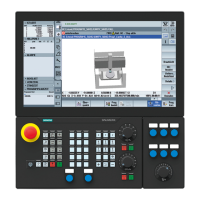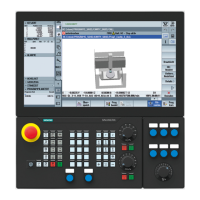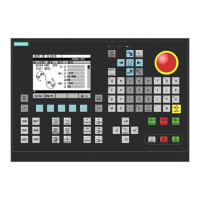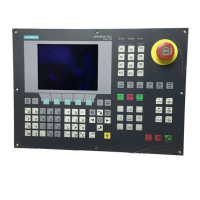Detailed description
2.7 Structure and functions of the basic program
Power Line Basic PLC Program (P3)
2-46 Function Manual, 08/2005 Edition, 6FC5397-0BP10-0BA0
The following functions are performed in the cyclic part of the basic program:
• Transmission of the control/status signals
• Distribution of the auxiliary and G functions
• M decoding (M00 - M99),
• M, S, F distribution
• Transmission of the machine control panel signals via the NCK (on the 840D only)
• Acquisition and conditioning of the user errors and operating messages.
Control/status signals
A shared feature of the control and status signals is that they are bit fields. The basic
program updates them at the start of OB1.
The signals can be subdivided into the following groups:
• General signals
• Mode-groupspecific signals such as operating modes
• Channelspecific signals such as program and feed modifications
Axis- and spindlespecific signals such as feed disable
Auxiliary and G functions
The auxiliary and G functions have the following characteristics:
• Transfer to the PLC is blocksynchronous (referred to a parts program block)
• Transfer is acknowledgecontrolled.
• The acknowledgment times have an immediate effect on the execution time of NC blocks
containing auxiliary functions requiring acknowledgment.
The value range is presented in the table below:
Function Structure Value range Data type
1. Value 2. Value 1. Value 2. Value 1. Value 2. Value
G function G function 255
1)
Byte
M word M group M word 99 99.999.999 Word DWord
S word Spindle no. S word 6 Floating
point
2)
Word DWord
T word Magazine
no.
T word 99 65535 Word Word
D word - D word 99 255 Byte Byte
H word H group H word 99 Floating
point
Word DWord
F word Axis No. F word 18 Floating
point
Word DWord
1)
relative number, transferred for each G group
2)
corresponding STEP 7 format (24-bit mantissa, 8-bit exponent)

